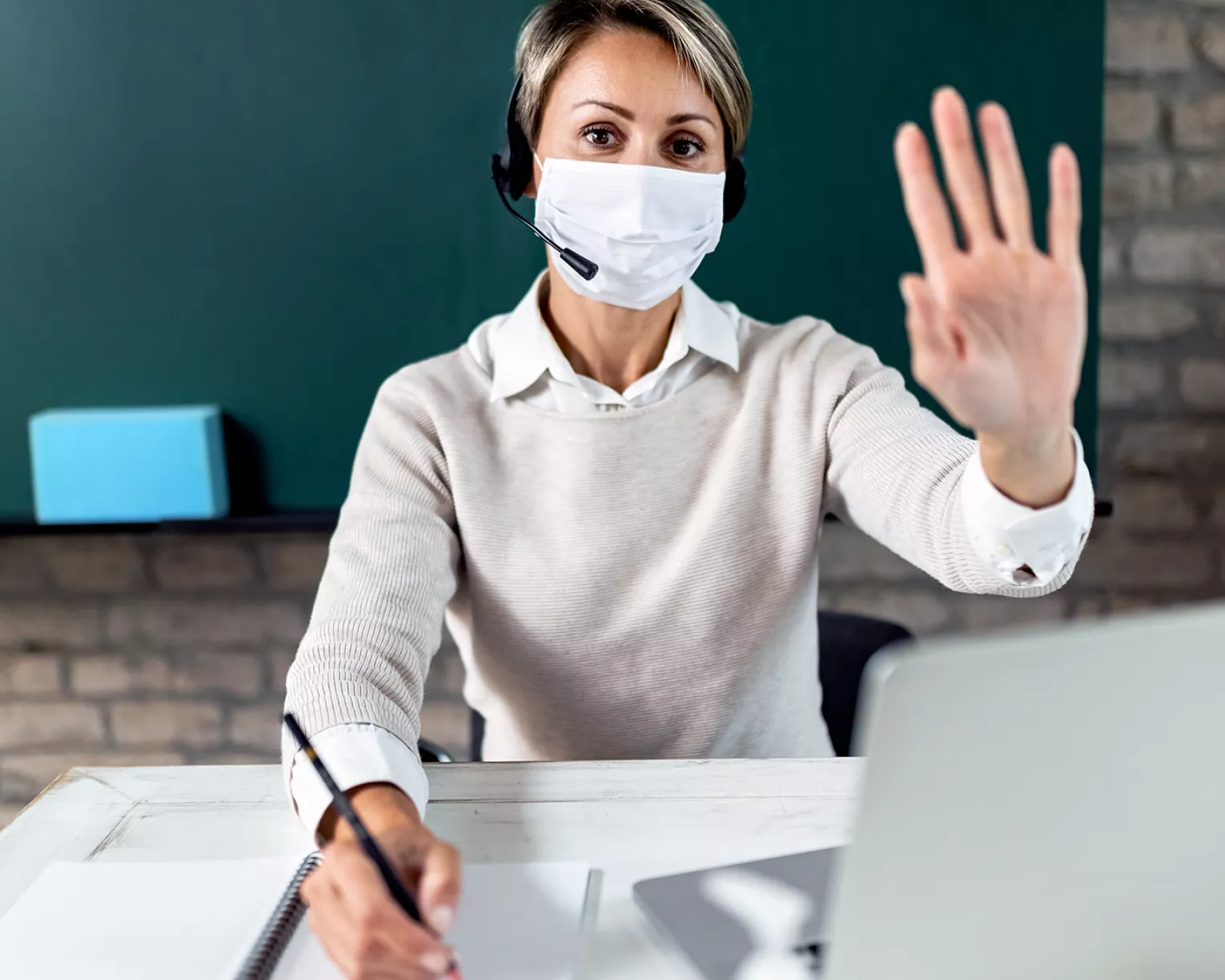NEA provides guidance and resources for returning to classrooms safely, and with an emphasis on racial and social justice.
Learn More
Published: March 26, 2021
This checklist includes key environmental and student learning factors to consider in your planning and instruction as you transition to the hyflex learning model.
Learning Environment
Consider the following as you assess your learning environment.
Health and Safety
- Protocols for in-person hygienic procedures, including daily monitoring, use of PPE, disinfection, and cleaning.
- Protocols for when someone gets sick.
- Daily check in on students’ social and emotional well-being.
- Consider additional needs of under-resourced students.
Equity
- Lessons, resources, materials, and activities adhere to Universal Design for Learning Guidelines to ensure accessibility for all students.
- Classroom and lessons reflect the cultural capital of the diverse body of learners.
- Normalize pronoun sharing by adding pronouns to your name and create a space for students to share their pronouns.
Community
- Use technology to infuse connectedness and opportunities for peer-to-peer interaction using break out rooms, chat box, and/or polls.
- Develop expectations for students and provide opportunities for students to revise and modify; where developmentally appropriate, co-create expectations.
- Emphasize the value of the diverse perspectives that students bring to the classroom and model active engagement in these perspectives.
Communication
- Establish communications protocols for students and families.
- Set office hours and communicate with students and families.
- Keep contact information for students up to date.
- Provide opportunities for one-on-one time with students and families.
Technology
- Train students and families on how to use technology for online learning.
- Plan for students without devices or Internet connectivity.
- Establish and review netiquette rules for online behavior.
- Use visible signs (such as Zoom backgrounds) to show that you are LGBTQ affirming and advocate Racial and Social Justice.
- Check to ensure the apps you are using comply with FERPA and student privacy laws.
- Provide students and families with online safety and student privacy information.
- Identify technical support personnel.
- Assess student technology needs and supports.
Student Learning
Consider the following as you assess your lesson plans.
Instruction
- Set clear learning objectives and goals for each lesson and base activities on objectives.
- Break instruction into mini lessons that provide students with opportunities to respond or actively engage using the chat box, polls, quizzes, student response tools, or break out rooms for small group work.
- Provide opportunities for differing modes of completing assignments.
- Incorporate frequent brain breaks and opportunities for physical activity.
- Consider how to balance synchronous and asynchronous instruction to maximize active learning time, student engagement, and differentiation.
- Record and post your lessons online.
- Identify opportunities to apply project-based learning.
- Identify assignments that are appropriate for a flipped class.
Support Structures
- Identify other staff members who can extend, enrich, or support learning and social emotional needs. Consider library/media specialists, art and music teachers, Special Ed Educators, ELL educators, content area specialists and coaches, counselors, social workers, education support professionals, and others.
- Identify a way for students without devices or Internet connectivity to receive and submit resources, materials, and assignments.
- Communicate locations of Wi-Fi hot spots that students can access.
Evaluations
- Use formative assessments and provide frequent feedback.
- Review your district’s guidance documents for summative assessments.
- Use Project Based Learning as an alternative to testing to evaluate student understanding.
NEA provides guidance and resources for returning to classrooms safely, and with an emphasis on racial and social justice.
Downloads
Join Our Movement
We ask only what is right: equal opportunity for every student, every educator, every family. At home, in school, online, in Washington–there’s a right place for all of us to make a difference.

Hybrid Learning Series
The COVID-19 pandemic has brought about new challenges for educators as learning in many school districts has transitioned from in-person instruction to distance learning models that include combinations of in-person instruction and virtual learning.
Stay Informed We'll come to you
We're here to help you succeed in your career, advocate for public school students, and stay up to date on the latest education news. Sign up to stay informed

